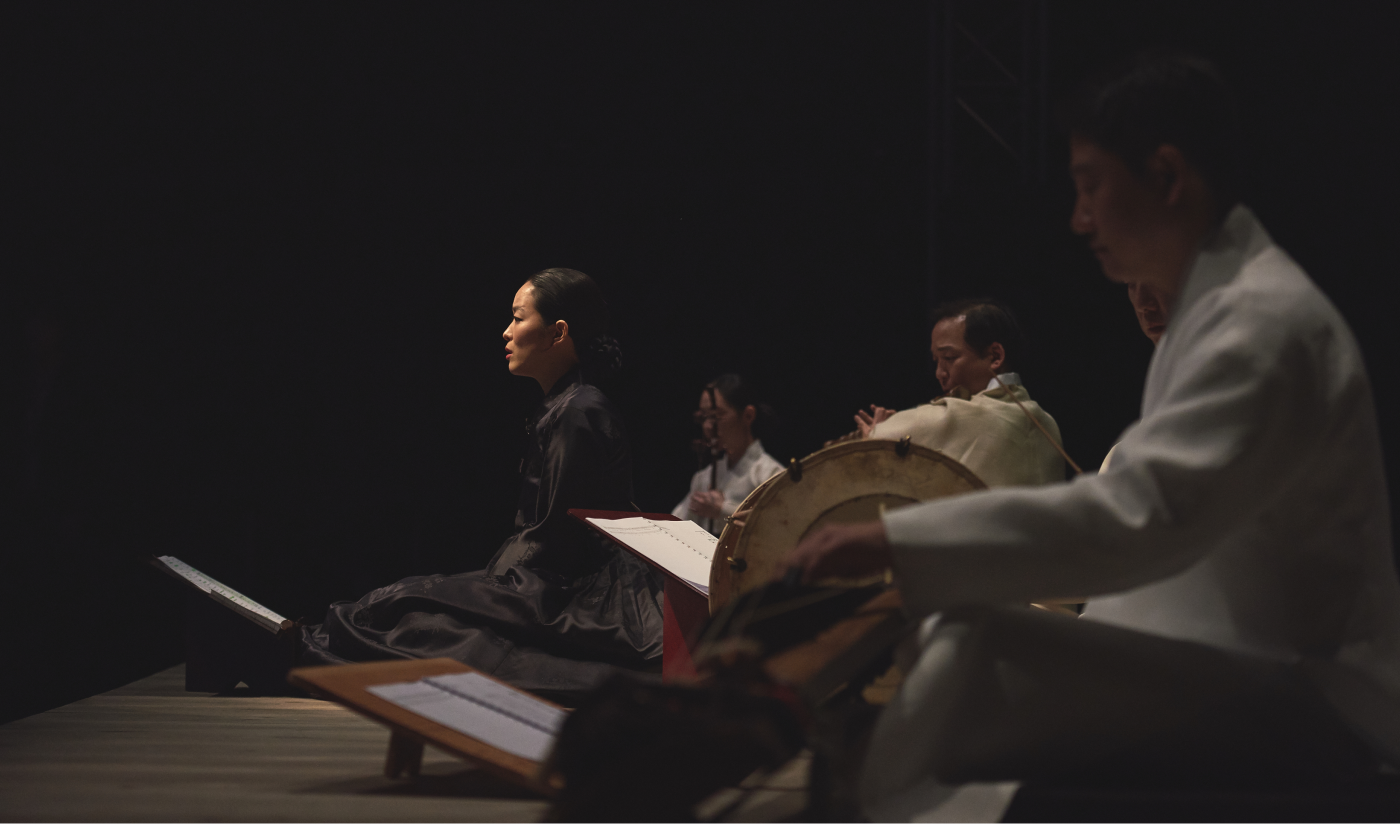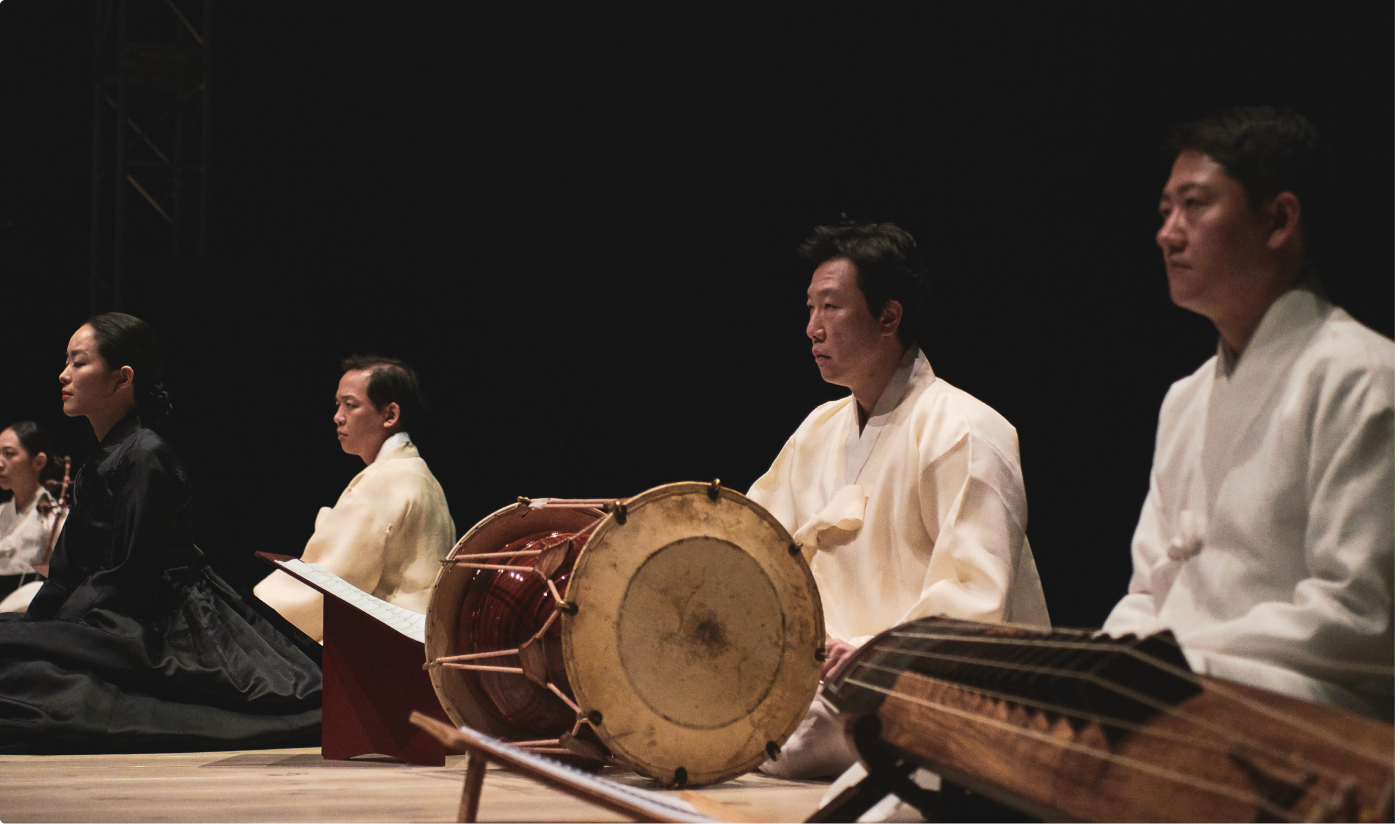The first traces of
musicians in
Tongyeong date back
to the late 1600s.
The first traces of musicians in Tongyeong date back to the late 1600s. Naval Commander Ryu Junggi in 1687
established a music school in the city, back then called Tongjeyeong, training around 100 musicians. Ten years later,
Commander Jeong Hongjwa set up a government- funded institution, the socalled Gyobangcheong,
employing 25 female singers and dancers. Drum dance and sword dance were developed from this period.
Later on, in the wake of the dismantlement of Tongjeyeong in 1895 and during Japanese colonial rule,
most of the artists were integrated into a Gwonbeon (training institutions for Gisaeng, similar to Geisha.)
Ancestral ritual music performed by so-called Samhyeon-yukgak traditional ensembles was popular among people
at the times of Yi Sun-shin and has been played to date. Western music finally came to Tongyeong in the form of music clubs
and study groups in the 1920s, followed by the establishment of the Tongyeong Music Society, which stayed active through out
the Japanese occupation. After liberation at the end of World War II, it changed its name to Dongbang Musical Troupe.
In 1922, as part of the secret anti-Japanese Tongyeong Youth Organization, Tongyeong Youth band was formed and
contributed to the spread of western music in the region. It became famous when, armed with a silent film projector,
it went on a nationwide tour to help flood victims in Hwanghae Province (today’s North Korea.)
When film companies such as Samgwang and Seonil began to distribute silent movies in 1928, its background music was
made popular by groups like the Tongyeong Brothers and Tongyeong Youth band. Film music became more complex,
and ensembles such as Brass Band were formed in the 1930s. Besides musical effects required by films, they also performed
music by Isang Yun, who had by then established himself as musician and composer in the region. In 1937,
his collection of children’s songs was published and further strengthened the city’s musical reputation.
Following liberation in 1945, Tongyeong Culture Association was established, and artists in the fields of music, literature,
theater, and dance worked hard to revive traditions and artistic achievements lost during the war.
Isang Yun and Yunju Jeong stood out in music; they were in charge of music at the local theater. In 1940, Isang Yun and
Yunju Jeong, Gapsaeng Choi, and Sanghan Choi had formed a string quartet and struggled to keep performing during the
last years of the war. From 1945 on, Yunju Jeong, Isang Yun, and Youngjun Lee taught music in local schools.
By 1950, Yunju Jeong had established himself as a well-known composer with works such as Yeomcheon, a musical drama for
orchestra; Symphony No. 1- sketch of the early autumn; his first string quartet, and Magpie’s death, a dance suite,
which was premiered by Seoul Symphony Orchestra. In 1956, Isang Yun, having moved to Seoul to help rebuilding
the country’s shattered musical scene, was awarded the Seoul City Cultural Award for his String Quartet No. 1 and a piano trio.
The award made it possible for him to travel to Europe and pursue musical studies in Paris and Berlin. Music for Seven
Instruments, written in 1959 and premiered in Darmstadt, Germany, marked the breakthrough for his international career.
The history’s success later brought about the establishment of the Isang Yun Memorial Museum (2010) and
Tongyeong Concert Hall (2014), ending years of inconvenience and lack of adequate infrastructure.
The success of Tongyeong Internaionl Music history also led the city of Tongyeong to be internationally recognized
as a UNESCO City of Music (2015) and finally to the return of the remains of sang Yun to Tongyeong in 2018.


